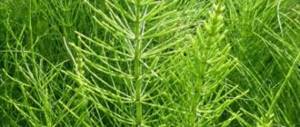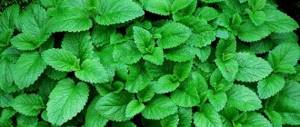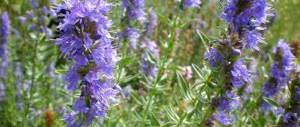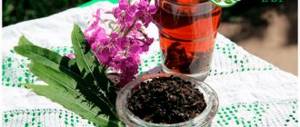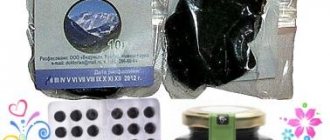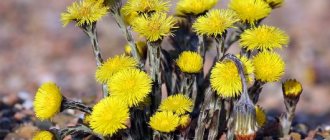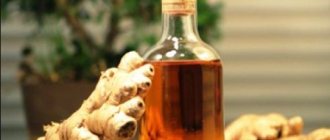Legends about chicory
The aroma of chicory deceived Suleiman the Magnificent.
According to one legend, during one of his conquests, Suleiman the Magnificent noticed that his Janissaries were happily drinking a black and incredibly aromatic drink, although they were not allowed coffee.
The Sultan suspected that his coffee supplies were being stolen and became furious. The guards called to account categorically denied the theft. They showed Suleiman a bright blue flower and assured him that it was from its roots that they prepared a drink.
As proof, the Janissaries roasted the root and prepared a drink whose aroma was so similar to coffee. Since then, the Sultan ordered the cultivation of chicory throughout the Ottoman Empire.
The chicory herb has been known to people for more than two thousand years, and therefore it is difficult to say exactly in which country the drink from its roots was first prepared. Since time immemorial, it has been used as a medicinal plant by residents of Europe, Asia, Africa, India, Indonesia, and the USA.
The healing properties of chicory are mentioned both in the ancient Egyptian Ebers papyrus (XVI century BC) and in the works of ancient doctors and scientists (Theophrastus, Dioscorides, Pliny the Elder).
Avicenna used the herb to improve digestion, in the treatment of diseases of the gastrointestinal tract, eye inflammation, and joint diseases (for example, gout).
Residents of Ancient Greece and Ancient Rome ate the plant fresh and made potions from all its teas to treat wounds, cuts, abrasions, insect bites, poisonous spiders and snakes.
How to choose chicory when buying
When purchasing a product, check the composition description. It must be a 100% natural product. It is allowed to contain natural additives (not taste imitators) of blueberries, rose hips and other berries and fruits. Pay attention to the amount of inulin . The higher its content (40-60%), the better the quality of the product. If the inulin concentration is below 30%, the product does not meet the requirements of GOST.
Experts recommend the following drinks:
- Gold spine;
- Health;
- Khutorok;
- Chicorinka.
How to choose quality instant chicory
Chicory is produced in 3 types:
- ground chicory;
- instant chicory;
- chicory – liquid.
Beverage manufacturers sometimes sell counterfeits instead of chicory containing additives from finely ground grains of oats, rye, and barley. It is easier, and therefore more often, to counterfeit ground and soluble chicory powder. Therefore, be careful when purchasing a dry product.
High-quality powdered chicory should be:
- finely dispersed bulk;
- light-dark brown. Too light indicates the presence of additives;
- no lumps are felt to the touch;
- when shaken, a quiet rustle of the contents in the bag being poured out is heard;
- Vacuum packaging is better.
At home, be sure to check the quality of the purchased product. It may contain thickeners and artificial flavors.
A sharp, sharp, too “bright”, obvious odor is obvious evidence that an artificial flavor was used in the manufacture of the product, which may have allergic properties.
The next component of the counterfeit product is maltodextrin. It is prepared from vegetable starch and is used as a product thickener. The sweetish taste of the drink is an obvious fake. The natural product will taste slightly bitter when diluted with 1 teaspoon of powder in a glass of hot water without sugar.
Coffee and chicory
What is healthier - chicory grass or coffee?
They began to scald the roots and brew them like coffee only in the 10th century. There is also an opinion that Napoleon Bonaparte contributed to the spread of the drink made from chicory roots.
In 1806, the so-called “Decree on the Continental Blockade” was published, prohibiting the import of food products into France from unfriendly states. Coffee prices have increased tenfold.
Wary of surrogates mixed into ground coffee, buyers preferred coffee beans. However, enterprising grocers used special molds to give chicory paste the appearance of coffee beans.
After drying, the paste turned to stone, and chicory grains were mixed with coffee beans in completely shameless proportions. So chicory became an ideal substitute for coffee precisely because of its unusual property of hardening after contact with moisture. And thanks to the ingenuity of French traders, chicory grass became a faithful companion to coffee.
The history of chicory in Russia began in the 19th century. In Russian historical documents, the first mention of chicory coffee dates back to 1800. In Rus' they called it Petrov batog; they first began to grow it in the Yaroslavl province.
At the same time, a drink with chicory and coffee with chicory appeared. By 1890, more than 400 pounds of dry root were exported abroad annually, but much more was grown for domestic consumption. The plant was in demand at any time of the year and brought good profits, so it was called the “Golden Root”.
Preparation of soluble chicory
To obtain soluble chicory, the beneficial properties of which would be similar to regular chicory, substances are extracted with water (washed out) from the powder of dried ground roots. The solution is then sprayed in spray ovens with simultaneous drying. The water evaporates, and the dry residue is packaged in waterproof packaging. Pure powder was available for sale. Flavoring additives are added to it in the form of blueberries, ginseng, echinacea or mixtures thereof and other berries, fruits, and medicinal herbs.
For an amateur's taste: you can brew natural chicory in a pot and enjoy the unusual taste and aroma of the drink. While rushing to work, you can drink a cup of instant chicory without or with a flavoring additive.
Botanical description
Chicory grass
Common chicory grass {Cichorium intybus L.). Belongs to the Asteraceae family (Compositae = Asteraceae). This is a perennial herbaceous plant up to 150 cm high with a thickened (in the upper part 3-4 in diameter) multi-headed spindle-shaped root up to! .5 m.
All parts of the plant contain milky sap. The stem is green or bluish-green, erect, twig-like, more or less branched, 15-150 cm high, rough with sparse hairs. The branches are often strongly deviated, somewhat thicker towards the apex, bristly, curly hairy, almost glabrous or glabrous.
The basal leaves are from planiform-pinnately divided to entire, more or less serrated along the edge, narrowed at the base into a petiole; stem - few, greatly reduced, stem-encompassing.
The flowers are collected in numerous single or several baskets on short peduncles. The baskets themselves are single or clustered in groups at the top of the main stem, lateral branches and in the axils of the upper and middle stem leaves. The flowers are blue, less often pink or white, all ligulate.
The fruit is a prismatic, irregularly wedge-shaped achene 2-3 mm long with a short tuft of films. It blooms from June to early September, the fruits ripen in August-September.
In Russia, chicory grass is found in the European part, the Caucasus and Siberia. Common habitats are meadows, forest clearings, grassy slopes. It often settles as a weed in wastelands, fields, near roads, near populated areas. In the mountains it rises to the middle mountain zone.
Chemical composition
Chicory grass roots
The milky juice of chicory contains bitter substances (sesquiterpene lactones lactucin, lactucopicrin), as well as taraxasterol.
Chicory herb roots contain:
- tannins;
- resins;
- fructose;
- phenols;
- organic acids;
- coumarins;
- pectin;
- macro- and microelements - potassium, phosphorus, sodium, calcium, magnesium, zinc, manganese, selenium, copper, iron;
- vitamins A, K, C (up to 15.8 mg%), E, PP, B vitamins: B,, B2, B3, B5, B6, B9).
In addition, the root contains up to 40% inulin (in cultivated form - up to 65%), 2-3% sugars (fructose - up to 9.5%, levulose - up to 20%, pentosan - up to 6.5%), glycoside intibin bitter taste (up to 0.2%).
Chicory herb contains lactones, triterpenes, inulin, ascorbic and chicoric acids. The flowers are a coumarin glycoside of chicory, which, upon hydrolysis, is broken down into esculegin and glucose, and the seeds are inulin, a pyrocatecholdehyde.
When chicory roots are dried and fried at a temperature of 180°C, inulin is hydrolyzed, the fructose content increases (from 2 to 20%), the glycoside intibin is destroyed, due to which the taste of chicory loses its excessive bitterness.
During the heating process, fructose caramelizes and gives the chicory roots a rich brown color, forming the essential oil chicoreol, which determines the taste of the drink.
Medicinal properties
Chicory root has a number of beneficial properties for the body. It calms the nervous system and reduces the pulse rate, restores heart function, dilates blood vessels, improves metabolism, digestion and can act as a mild laxative and diuretic.
Hypertensive patients are advised to replace coffee with chicory drinks, as it helps lower blood pressure. Chicory has found use in the treatment of type 2 diabetes mellitus, spleen, liver and kidney problems, and kidney and liver stones.
Traditional medicine uses chicory herb in the form of an infusion as a diaphoretic, diuretic, choleretic, and analgesic for stomach pain, as well as for exhaustion, hysteria and anemia.
Traditional healers use rubdowns from chicory tincture or decoction to treat eczema, dermatitis, psoriasis, old non-healing wounds, rashes and boils. Based on clinical studies, Azerbaijani scientists have proven that in the initial stages, type 2 diabetes can be treated with chicory.
At more severe stages of the disease, the condition of the patients improved, and tests showed a decrease in sugar levels in the urine.
Benefits and Benefits of Chicory Root
Reduces stress
For anyone who has problems with stress, caffeine is not the best choice and may even make the problem worse. Caffeine is the main ingredient in coffee, and even various substitutes contain it in trace amounts. Limiting your caffeine intake will help reduce the levels of adrenaline and cortisol released during sleep and various life situations.
A 2006 study published in the journal Pharmacology of Biochemistry and Behavior found that regular caffeine consumption combined with stress caused a significant increase in cortisol levels. Since chicory is caffeine-free, it is a great way to reduce caffeine intake and keep cortisol levels under control, thereby reducing stress.
Has an anti-inflammatory effect
Plant polyphenols can fight inflammatory processes. The Department of Pathophysiology and Gerontology at the University of Pécs Medical School in Hungary conducted a study on 27 healthy volunteers who were asked to drink decaffeinated coffee rich in plant phenols for one week. Clear improvements were found in red blood cell deformability—the body's ability to respond to inflammation by restoring cells to their original state.
This means that chicory can reduce inflammation, which is very important. Why? Because inflammation is the root of most diseases and illnesses, and if you reduce it, then you can prevent many health problems in the initial stages.
Protects the liver
The ability of chicory root extract to protect the liver from chemically induced free radicals and their toxicity was reviewed in a 2020 medical review. The subjects were divided into 4 groups depending on the type of treatment, during which the degree of liver damage from free radicals and antioxidants was analyzed. In the group of subjects who took chicory root extract before treatment, the oxidative load on liver cells was significantly reduced and their damage due to toxicity was reduced.
The results showed that the healing chicory extract is rich in natural antioxidants, is able to get rid of chemically active free radicals, increases the body's defense system, and also cleanses the liver.
Prevents diabetes or delays its onset
Diabetes is the No. 1 problem in the United States, but it doesn't have to be that way because there are so many natural remedies that can cure the disease. Most of them start with proper nutrition, and if you also include chicory in your diet, then the course of the disease will improve or stop altogether.
The study, published in the Journal of Traditional and Alternative Medicine, examined the effects of dried chicory root extract on blood glucose levels, lipid metabolism and fecal properties in 47 healthy adults. Participants who took chicory root extract experienced stabilization in their levels of adiponectin, a protein that regulates blood glucose levels and the breakdown of fatty acids. These results indicate that chicory root extract may delay or prevent the onset of diabetes and also facilitate the body's cleansing process naturally due to its fibrous structure.
Helps cope with osteoarthritis
A clinical study conducted by the Division of Rheumatic Diseases at the University of Texas found that chicory root extract has anti-inflammatory effects, which may help treat arthritis, especially degenerative joint disease and osteoarthritis.
During the study, subjects over the age of 50 with osteoarthritis in the hip or knee took chicory. The researchers performed various laboratory tests throughout the testing period and at the end. Thirteen of the 18 subjects treated with the protocol experienced a 20% improvement in pain response and joint mobility, confirming chicory's ability to treat joint pain.
Improves gut health
Chicory root contains the oligosaccharide-enriched prebiotic inulin. The inulin in chicory root is also known as prebiotic fiber because it is highly fermentable by friendly bacteria in the gut. Prebiotics promote the growth of beneficial probiotics in the human digestive system and enhance calcium absorption. This is why inulin or chicory root fiber is part of most probiotic supplements because the benefits of chicory are felt within just a week of supplementation.
On the one hand, this is not bad, but on the other hand, it is not always comfortable, since due to fermentation in the intestines, excessive gas formation will begin. So, if something strange happens in your stomach after a hearty lunch, it may be due to the amount of inulin that your body is currently trying to digest. This process is usually accompanied by bloating, gas, discomfort and abdominal pain.
Relieves constipation
Chicory relieves constipation, largely due to its inulin content. In one study published in the International Journal of Nutrition, researchers examined the effects of consuming 15 grams of chicory daily in older adults with constipation. The subjects were divided into two groups, one of which took chicory root, the other a placebo. The study lasted 28 days.
The study found that “volunteers in the inulin group were satisfied with their digestive system and reported a decrease in bowel problems. ... Taking a daily supplement with 15 g of inulin helps relieve constipation and significantly improves the quality of life of older people suffering from this disease.”
Uses of chicory and recipes
Chicory herb - drink
Infusion for the treatment of gastritis and gastric ulcers
1 tbsp. Pour 1 cup of boiling water over a spoonful of roots. Leave for 2 hours, cool, strain, take 1/4 cup 4 times a day before meals for a month for peptic ulcers.
Chicory shoot juice for treating diabetes
Chicory herb - juice is obtained from the shoots.
The shoots are collected at the budding stage. Add 1 teaspoon of freshly prepared juice to 1/2 cup of warm milk. Drink 3 times a day for one and a half months.
Herbal mixture for the treatment of hepatitis, cholecystitis
Mix in equal parts the herb and flowers of immortelle sandy, St. John's wort herb, shepherd's purse, medicinal cap, chicory herb, and corn silk. 2 tbsp. spoons of the resulting mixture pour 0.5 liters of boiling water, leave for 2 hours, cool and strain.
Take 1/3 cup 3 times a day 30 minutes before meals.
Lotions for the treatment of eczema and skin inflammation
Pour 20 g of dry chicory herb into 500 ml of boiling water and heat in a water bath for 20 minutes. Cool, strain. Use as a lotion for eczema.
A decoction for the treatment of diathesis in children, skin rashes, acne, purulent wounds and boils
4 tbsp. spoons of dry crushed chicory root and herb pour 1 cup of boiling water. Place on the fire and simmer over low heat for 5 minutes. Leave for an hour, strain. Use for baths, rinsing and lotions.
For the treatment of toothache
1 tbsp. Pour 200 ml of boiling water over a spoonful of crushed dry root and leave for 30 minutes. Cool, strain and rinse your mouth for toothache.
General strengthening decoction of chicory roots
Crush 20 g of dry roots and pour in 0.5 liters of boiling water, simmer over low heat for 30 minutes. Strain the broth and add boiling water to the original volume. Drink 1/2 glass before meals.
Root decoction for treating joint pain
Chicory herb - decoction of roots,
chop 20 g of dry roots, pour 1 cup of boiling water and leave on fire for 15 minutes. Strain, add water to the original volume, cool. Soak the bandage in the broth and secure it to the sore joint.
A decoction of the roots for the treatment of seborrheic dermatitis
Pour 1 teaspoon of chopped roots into 200 ml of boiling water. Put on fire and boil for 10 minutes. Use for baths and lotions.
Infusion for nervous excitement
1 dining room. pour a spoonful of crushed roots into 0.5 liters of boiling water. Leave for 30 minutes, strain and drink 70-100 ml cooled before meals.
Juice from leaves and flowers for the treatment of edema and dropsy
Add 20 drops of fresh juice to 1/2 cup of warm milk. Drink 2-3 times a day.
Infusion of herbs and chicory flowers for the treatment of biliary dyskinesia
Place 1 teaspoon of dry crushed raw materials in a thermos and pour 1 glass of boiling water, let it brew for 40-60 minutes. Take 1/2 cup 30 minutes before meals in the morning and evening.
Infusion of herbs and chicory root for the treatment of urolithiasis
Place 1 tbsp in a thermos. spoon of crushed roots and herbs, pour 2 cups of boiling water, let it brew for 4 hours, take 1/2 cup in the morning, at lunch and in the evening 20 minutes before meals.
A decoction of the root for the treatment of urinary incontinence in women
Place 1 tbsp in an enamel pan. spoon of chopped chicory root, pour 1 cup of boiling water. Boil in a water bath for 10 minutes, let it brew for 1 hour. Cool and add boiled water to make 1 glass of medicine. Drink 1/4 glass 20 minutes before meals for urinary incontinence in women.
Collection for the treatment of rheumatism
Place 1 tbsp in a thermos. a spoonful of chopped chicory root and 1 teaspoon of meadowsweet herb (meadowsweet). Pour 1 cup of boiling water. Let it brew for 1 hour. Take 1/2 cup during the day for rheumatism.
Useful properties of chicory herb
Due to its medicinal properties, preparations from this herb: decoctions, juice and infusions have a therapeutic effect. It helps normalize urination and has a choleretic property.
The beneficial components of this medicinal herb help normalize metabolism, restore cardiac activity, and have a therapeutic effect on those suffering from diabetes. Chicory inulin, a substitute for the hormone insulin, is very useful not only for diabetics, but also for patients with gastrointestinal problems, purulent formations, as well as patients with various inflammatory processes.
Contraindications
Chicory herb is contraindicated for people suffering from varicose veins and cholelithiasis, as well as hypotension, gastritis, gastric and duodenal ulcers, gastroesophageal reflux disease, and calculous cholecystitis.
Use with extreme caution for people prone to allergies (or allergic to ragweed and other plants of the Asteraceae family), since cases of cross-allergy to chicory often occur. Individual intolerance is possible.
Chicory herb is strictly contraindicated for children under 3 years of age, as well as during pregnancy and lactation, in order to exclude a toxic effect on the fetus, as well as disruption of the course of pregnancy, including premature birth. The daily intake of drugs and chicory drink for a healthy person is 3-5 tbsp. spoons a day.
Chicory: benefit or harm?
Instant chicory can often be found in the kitchen cabinet of a healthy eating enthusiast. The packaging of this product is full of promises - the drink can lower blood sugar levels, is useful for hypertensive patients, pregnant women, children and the elderly, helps the liver cope with the utilization of fats, and, finally, suppresses increased appetite.
However, many supporters of natural medicine believe that an instant drink, be it chicory or coffee, is a source of substances toxic to the body and has little benefit. Most raw foodists and strict followers of the Bragg, Shelton and Bates systems try to give up even a cup of chicory. Should this drink be considered healthier than coffee? What are the actual benefits and harms of chicory for the body?
Useful properties of chicory
The healing properties of chicory are due to the beneficial substances in its composition. The root of a plant from the Asteraceae family is a source of vitamins, tannins and fiber. There is also salad chicory; it is distinguished by more fleshy roots and stems.
Chicory is a genus of biennial or perennial herbs of the Asteraceae or Asteraceae family. This is a healthy and aromatic plant, the most popular coffee substitute. Chicory is a real storehouse of nutrients.
To prepare the drink, roasted chicory root is used. The soluble concentrate is obtained using extraction - first, a strong “infusion” is brewed from the roasted dry root, and then it is dried in special sublimation ovens, obtaining a powder that we purchase in pharmacies or regular stores.
The main beneficial component of chicory is inulin. This substance is a type of fiber that is especially beneficial for intestinal microflora. The notorious bifidobacteria that inhabit the human gastrointestinal tract feed exclusively on fiber.
If your usual diet consists of processed foods, concentrated foods and store-bought white flour products, another cup of chicory drink will help prevent dysbiosis and constipation.
It is worth including chicory in your diet, even if you are going to be on a vegetable or fruit diet for a couple of weeks. Your microflora will receive nutrition and get used to the “good life”, so bloating and diarrhea will bother you less during emergency weight loss.
In addition to inulin, chicory is notable for its ability to imitate the taste of coffee. The roasted root is bitter and tart, so an infusion from it can replace your favorite drink in case of emergency.
If you find out you are pregnant, doctors strongly recommend that you consider replacing instant coffee with chicory.
This will reduce the risk of gestosis, heartburn, heaviness in the stomach, and constipation. Doctors recommend including chicory in the diet of people with hypertension.
The drink is especially useful for type 2 diabetes and obesity - inulin can reduce the glycemic index of foods, and, therefore, alleviate the condition of such patients and reduce cravings for sweets. In this case, it is recommended to take 150 ml of the drink 20 minutes before each meal.
The vitamin-mineral complex of chicory includes vitamins A, E, B1, B2, B3, C, PP, in addition, the root extract is rich in calcium, potassium and magnesium. Accordingly, a cup of chicory drink will be useful to all those who strive to maintain not only health, but also beauty - most of these substances are responsible for skin tone and the rate of restoration of collagen fibers.
It is not surprising that, having so many beneficial properties, chicory is successfully used for weight loss.
Soluble chicory: contraindications for use
When discussing the benefits and harms of soluble chicory, one cannot fail to mention the contraindications that it has.
There are quite a few contraindications to the use of chicory. You should not combine its use with antibiotic drugs; it may somewhat interfere with the absorption of the medicine.
Chicory will not be useful for those who experience problems with veins - varicose veins, as well as hemorrhoids, can only get worse if you abuse this drink.
Chicory is rich in vitamin C, and many people are allergic to ascorbic acid. So if you can't eat most citrus fruits and currants give you a rash, consult your doctor before purchasing instant chicory for a healthy diet.
You should not drink the drink if you have spasms of the respiratory system - bronchial asthma, for example.
Harm of chicory
Many naturopathic doctors consider chicory, if not harmful, then no less useless than our usual tea or coffee. Most alternative medicine proponents believe that chicory powder is a dead product. Indeed, many varieties are enriched with the necessary vitamins artificially, and it is difficult to argue with the fact that “chemical” vitamins are less easily absorbed than natural ones.
The second complaint about the drink is the quantity and quality of inulin contained in it. It is known that only mature plant roots contain up to 75% of this substance, and in our conditions, some manufacturers add cheaper apple pectin instead of inulin to get benefits.
So to ensure you get the most out of your drink, buy powder labeled as natural chicory extract, and try to avoid artificially enriched, colored or sweetened versions of the product.
Fitness trainer Elena Selivanova - especially for https://www.AzbukaDiet.ru/.
Tell your friends:
Chicory coffee
Chicory herb - how to make coffee
Cut the collected and washed chicory roots into cubes 1-1.5 cm in size. Dry, fry in a frying pan without oil until evenly brown, cool. Grind in a coffee grinder or blender. Brew like natural coffee, at the rate of 1 teaspoon per 1 glass of boiling water. You can add milk and drink a tasty, healthy drink.
Growing chicory
Chicory herb - cultivation
About 12 different varieties of chicory have been bred. The most famous are its two varieties:
- Salad, which is used for preparing salads and side dishes. We most often sell three varieties of salad chicory: witloof, escarole and endive.
- Ordinary, or root. This variety is grown as an ornamental plant or for preparing medicinal decoctions. If a crop is planted to produce a drink that can replace coffee, then it is recommended to give preference to the root species. In Russia, the Yaroslavl variety is more popular.
Chicory is easy to grow from seeds, which must be germinated before sowing. To do this, they are soaked in gauze and left in a warm place for 2-3 days. It is better to sow chicory on the 20th of May. Before planting, be sure to fertilize the soil.
To do this, use complex mineral fertilizers, adding 3 tbsp. spoons for every square meter of bed. As a top dressing, you can take a mixture of humus, peat and nitrophoska.
The soil for sowing is prepared in advance. The soil is dug up and loosened, then compacted 1 cm deep using a wooden slatted hole and seeds are sown in the resulting holes. The distance between rows should be at least 35 cm, and between seedlings - 12-15 cm.
The first shoots appear within 1-2 weeks. As the culture develops, individual bushes are removed or replanted, increasing the distance between adult chicory to 30 centimeters, otherwise large plants will suppress the growth of smaller ones.
Chicory care
To ensure normal development of the crop, you need to periodically thin out the bed, weed, loosen, water and fertilize the soil. The optimal humidity level is considered to be 75-80%.
The plant is watered taking into account the frequency and volume of precipitation. It is not recommended to over-moisten the soil, otherwise the roots will begin to rot. To prevent the soil from drying out, mulch the soil.
Despite its good survival rate on the site, chicory loves when the bed in which it grows is carefully looked after. Therefore, it is necessary to periodically weed it, removing weeds, and after each watering, loosen the soil, thereby ensuring access of oxygen to the roots.
If necessary, you can treat the bushes with fungicides or other pesticides, following their application schedule so that by the time of harvest they are not “laid in the plant.” Ordinary chicory is characterized by increased resistance to various diseases and pests.
Salad varieties are treated with fungicidal compounds after germination. Such plant varieties are often affected by spotting. And if you don’t follow the watering norms, rot will develop.
Chicory pests
The following pests are most often found on chicory: wireworms, root mites, leaf aphids and slugs. Slugs are removed from bushes by hand. After treatment, the plants around the trunks should be sprinkled with crushed eggshells or sand.
To prevent infection, it is recommended to promptly thin out the garden bed and water the garden. If signs of spotting are detected on one of the bushes, remove the chicory immediately and burn it.
This fungal disease spreads quickly, causing the death of the entire crop. There are no effective methods of protecting chicory from infection, so to avoid infection, follow the requirements for caring for the bushes.
Chicory can be propagated by seeds and cuttings. The second option is the simplest and fastest. To get a new plant, it is enough to separate one part of the root system and germinate it in a separate pot.



